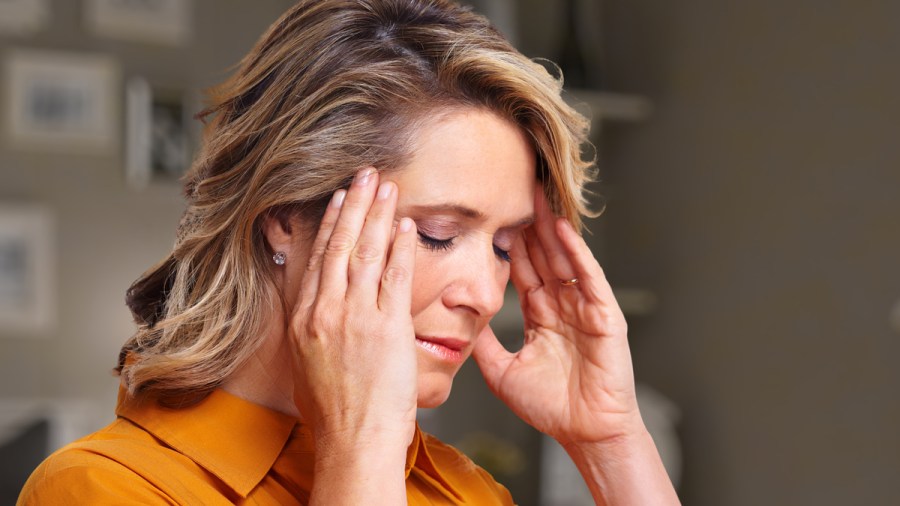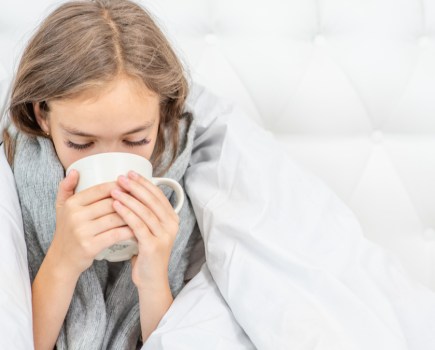A migraine is more than a headache but severe pain to one side of the head is a major feature of them.
Migraine sufferers may also experience feeling sick and increased sensitivity to light and sound. They can be triggered by a range of physical, emotional, and environmental factors. Everyone is different. It is diagnosed through an understanding of the type, severity, and frequency of symptoms though other tests may be done to rule out other conditions being the cause.
There are treatments that can help. However, many migraine sufferers don’t ever go to their GP about it. It is well worth seeing your doctor so they can help you find a treatment that could help.
Read on to find out more about the condition. However, this is no substitute for medical advice, so if you think you are experiencing migraines, it is important that you see your GP to get a diagnosis and to talk through the possible treatments and find the right solution for you.
What is a migraine?
A migraine is more than simply a headache, but it does include having pain on one side of the head. There are other symptoms too including feeling or being sick and feeling sensitive to light and sound. Some people may sometimes experience sweating, diarrhoea, find it hard to concentrate, experience tummy pain, and may feel very hot or cold.
There are also a number of types of migraine. Some people who suffer from a migraine get warning signs before it starts, such as seeing flashing lights, this is known as migraine with aura. However, it is more common for the migraine to start without these warnings. It can even happen the other way around, where you experience other symptoms or the aura, but with no headache. The headache stage of a migraine can last for anything from four to 72 hours.
Migraine causes
The cause of migraines is not known, but there are triggers that are common. Keeping a diary can help you pinpoint your own personal triggers. Causes can include
- Hormonal changes such as around the time of menstruation.
- Emotional causes such as stress, tension, shock or anxiety.
- Physical causes include getting poor sleep, having bad posture, jet lag, tiredness, or neck or shoulder tension.
- Dietary causes can include caffeine drinks, being dehydrated, missing meals or eating specific foods such as chocolate.
- Environmental triggers such as bright lights, strong smells, loud noises or flickering TV or computer screens.
- Some medications can be a cause including some sleeping tablets, the combined contraceptive pill, and Hormone Replacement Therapy (HRT).
Migraine symptoms
Migraine symptoms vary, but can include:
- A severe headache.
- Disturbances to vision.
- Sensitivity to light, sound, and smells.
- Feeling or being sick.
If symptoms happen regularly (on more than five days in a month) or are severe or can’t be controlled, see your GP. It is important to be vigilant to your symptoms.
If you get migraines it may be that you assume that any symptoms you experience are down to migraines. However, if you experience symptoms including a sudden agonizing headache, or a headache with a stiff neck, mental confusion, fever, double vision, and a rash, or weakness in the arms or side of the face, or slurred speech it could be caused by a stroke or meningitis, and you will need to call an ambulance. So, it’s important to be very aware of your symptoms.
Migraine diagnosis
It’s important to get a diagnosis if you are experiencing symptoms that you think are migraines as it means you can get the best treatment for you.
There is no test for migraines as such, but your doctor will use a combination of finding out more about how your symptoms are affecting you and whether there is a family history of headaches. They will also carry out an examination. Your doctor will want to rule out other conditions that could be causing the symptoms.
Keeping a diary of your symptoms can be useful in understanding how your migraines start. There is a useful resource on the Migraine Trust website, which allows you to keep track of when and what happens to you as well as noting other symptoms and any other information that might be relevant. This kind of information can be helpful in making a diagnosis.
Migraine treatments
There is no cure for migraines, but there are things you can do to help ease things. It is important to research and understand the side-effects of any treatment and to discuss it with a health professional as well as taking into account other medical conditions, so that you can get the best solution for you.
Painkillers
Some people find that over-the-counter painkillers such as paracetamol and ibuprofen help ease the symptoms. They will be more effective if you take them early, as soon as you think a migraine is coming, rather than waiting for the headache to really take hold.
It’s important to make sure you read and follow the dosage recommendations and that you only use them if it is safe for you to do so. If you find you’re using them repeatedly or they don’t seem to work, speak to your GP. They may prescribe something stronger. Triptan medicines may be prescribed, which are specifically for migraines.
Anti-sickness medication
These can help, even if the patient is not feeling sick, but they work best if you take them at the earliest opportunity, as soon as you feel a migraine is on its way.
Combination medicines
These are products that combine anti-sickness and painkilling components and there are varieties of these that are available to buy from a pharmacy. Speak to the pharmacist for advice on this.
Acupuncture
If medications aren’t right for you, or don’t work, acupuncture is an option and according to the NHS website can be beneficial in some cases if enough sessions are taken. Although some NHS surgeries may offer this most don’t, so it will be a case of paying for it privately.
Transcranial Magnetic Stimulation (TMS)
The National Institute for Health and Care Excellence (NICE) has approved TMS for use in treating and preventing migraines. It is delivered via a small electrical device that sends magnetic pulses through the skin. However, it doesn’t work for everyone, but for some people, usually those with migraine with aura, it can help. This can be used in combination with medications. Nice recommends that it is only given by a headache specialist at a specialist centre.
Things you can do for yourself
Because of the sensitivity to light, sounds and smells that many migraine sufferers experience, it can help to remove all these triggers by lying down in a dark and quiet room.
If you suffer other types of pain, take a look at our self-care tips.







